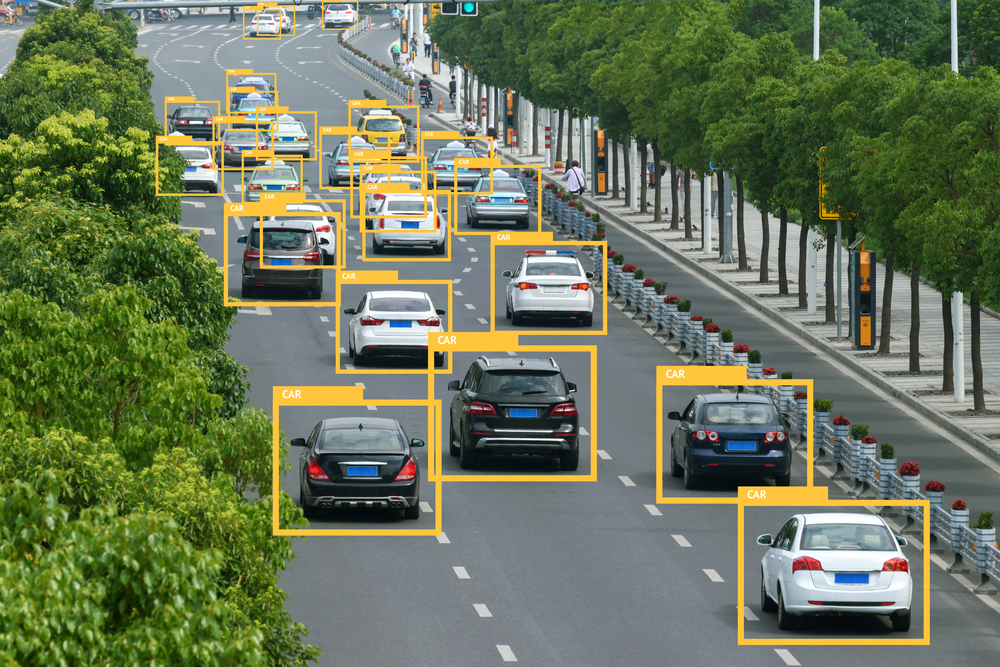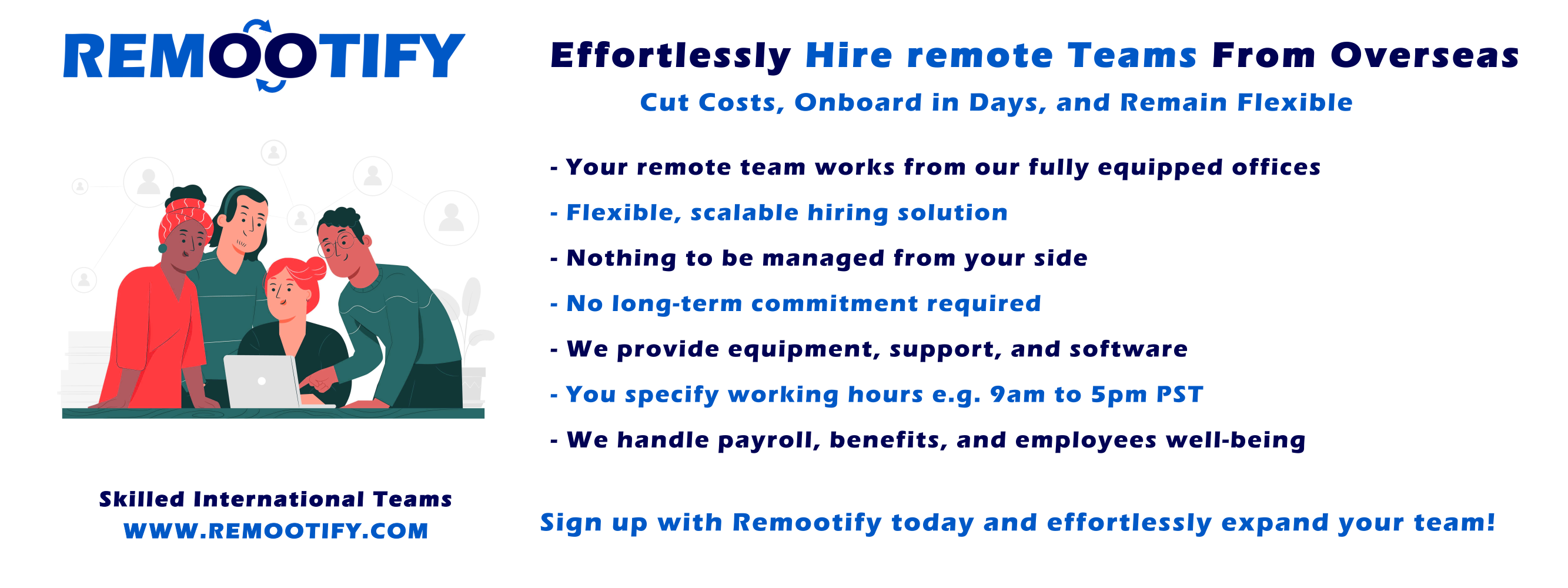Start hiring YOUR REMOTE TEAM, Today!
Enter your information below to start a discussion with one of our team members!

As we navigate the rapidly evolving digital world, we must recognize and embrace the wave of innovative trends sweeping across the IT landscape.
Each year ushers in various advancements, and 2023 is no exception. This article explores the latest developments revolutionizing various sectors, from computer vision to quantum computing, and their potential impact.
2023’s IT trends encompass computer vision, CRM platforms, health tech, digital twins, edge computing, IoB, low-code tech, quantum computing, RPA, spatial computing, total experience, 5G, genomics, bioinformatics, and AI & ML.
Those terms won’t make sense now, but we will discuss them in detail in the coming paragraphs. Let’s begin.
1- Computer Vision
Understanding Computer Vision
At its core, computer vision is a field that enables machines to ‘see’, interpret visual input, and make decisions accordingly. Computer vision algorithms require vast data to recognize subtle differences and varying visual inputs.
From inspecting products for minute differences to translating foreign signage into the viewer’s language, computer vision prototypes are transforming industries.
Impact on Businesses
For example, Google Translate. It leverages computer vision to translate signage into the user’s native language in real-time. This technology has immense potential, empowering self-driving cars to interpret traffic signs and navigate safely.
Similarly, consider Spotify’s Discover Weekly feature. It uses machine learning algorithms to analyze a user’s listening history, identifying patterns and preferences in the music they enjoy.
The system then scours Spotify’s vast library to find new songs and artists that align with these preferences, curating a personalized playlist that is updated weekly.
2- CRM Platforms
Significance of Customer Data Platforms
In the digital era, customer data platforms are as vital as gold vaults are to banks. Businesses rely on these platforms to collect, integrate, and manage customer data from various sources.
This centralization and cleanup of data offer a comprehensive view of consumers, enabling businesses to hyper-personalize experiences, enhancing engagement, and increasing customer retention.
How CRM Platforms are Transforming Businesses
CRM platforms have become the backbone of numerous successful businesses, providing essential insights into customer behavior and guiding strategies to improve customer experiences and drive revenue growth.
3- Health Tech
Emergence of Digital Health
The surge of the COVID-19 pandemic expedited the transition to digital health. Physical visits to healthcare providers became risky, so patients turned to remote healthcare options.
This reliance on digital health services has been sustained post-pandemic, leading to the development of smart medical equipment that leverages biometrics for remote examinations.
Health Technologies of the Future
Soon, we can expect biometrics and digital health to create smart, connected medical equipment that enables remote medical exams, making healthcare more accessible.
Let’s take the example of a ‘smart stethoscope.’ This device, connected to a digital health platform, could listen to a patient’s heartbeat and record the audio data.
It could then transmit this data securely over the internet to a doctor anywhere. Using advanced analytics powered by artificial intelligence, the doctor could analyze the heartbeat for anomalies, diseases, and conditions a human ear might miss.
4- Digital Twin
Understanding the Concept of Digital Twin
A digital twin is a real-time digital counterpart of a physical entity. These virtual replicas predict and measure performance, opening new doors for data analysis, testing, and genomic mapping in business and healthcare sectors.
Future of Digital Twin
The digital twin concept is not new; it dates back to NASA’s early exploratory missions. When NASA sent the Apollo 13 mission to the moon, engineers on the ground used a physical twin of the spacecraft to troubleshoot issues.
Today, they use digital twins for space missions. They create digital simulations of their spacecraft, allowing them to model scenarios, simulate conditions, test reactions and predict issues before they occur in real missions.
This use of digital twins helps NASA mitigate risks and improve the safety and success of its operations.
Similarly, in medicine, we face future medical challenges. Digital twin technology might finally eliminate the need for human clinical trials, ensuring the testing of new treatments is safe and efficient.
5- Edge Computing
Definition of Edge Computing
Edge computing refers to using decentralized computing nodes close to the interaction source. This method optimizes technological interactions and reduces latency, enabling more effective and real-time data consumption.
Applications and Benefits of Edge Computing
One practical example of edge computing can be seen in the implementation of smart home technology.
Consider a modern, smart home equipped with numerous Internet of Things (IoT) devices: thermostats, lighting systems, home security devices, smart appliances, etc. Each of these devices continuously generates data about the home environment and the usage patterns of the residents.
In a traditional cloud computing model, all this data would be sent to a remote data center for processing. This could result in latency issues, especially if real-time responses are required.
For instance, if a security camera identifies a potential intruder, any delay in processing this data and triggering an alarm could have serious consequences.
Edge computing addresses this issue by processing data locally, on the device, or a nearby computing node.
In this case, the security camera would have the processing power to analyze the data and make decisions in real-time, significantly reducing the response time and enhancing the overall efficiency and effectiveness of the system.
6- Internet of Behaviors (IoB)
Definition of IoB
The IoB is an innovative concept that helps businesses understand consumer behavior in a digital world. It collects and analyzes consumer interactions, preferences, and purchasing behavior data, providing businesses with valuable insights to gain a competitive edge.
IoB in Action
The IoB uses data from various IoT devices and online sources to better understand consumer purchasing journeys. This technology aims to improve user experiences and foster more meaningful consumer engagement.
7- Low-code Tech
Defining Low-code Tech
Low-code technology is a game-changer, enabling non-technical software development. It allows business users to create software using a simple drag-and-drop interface, eliminating the need for complex backend coding.
Impact on Businesses
By leveraging low-code technology, businesses can solve specific problems more efficiently without relying heavily on technical resources.
8- Quantum Computing
Quantum Computing and Predictive Analysis
Quantum computing transcends the limitations of conventional computing, allowing for predictive analyses of unprecedented scale. Companies like IBM and Google are leading the charge in this arena, with Google promising the largest quantum computer in 2017.
Future of Quantum Computing
Quantum computing is poised to play a crucial role in big data and predictive analytics, offering solutions to new problems and enabling businesses to extract more valuable insights from their data.
9- Robotic Process Automation (RPA)
Introduction to RPA
RPA, while not involving physical robots, is gaining significant popularity. It automates repetitive computer tasks that previously required human labor, streamlining processes and increasing efficiency.
How RPA Improves Workflows
By taking over mundane, rule-based tasks, RPA frees up human resources, allowing businesses to focus on more strategic, high-value tasks. This transformation is leading to improved workflows across numerous industries.
10- Spatial Computing
Definition of Spatial Computing
Spatial computing transcends the boundaries of traditional computing. It integrates digital and real-world elements, incorporating technologies such as VR and AR to enable more immersive and intuitive interactions with technology.
Real World Applications
From smart homes responding to voice commands to smart glasses integrating digital resources into our real-world experiences, spatial computing bridges the gap between the physical and digital worlds.
11- Total Experience
Understanding Total Experience
Total experience is an emerging concept that aims to create a holistic, interconnected business ecosystem. It ensures that all customers receive an outstanding experience across all touchpoints.
Total Experience in Practice
Uber effectively exemplifies Total Experience by integrating a user-friendly app interface, responsive customer support, flexible employment conditions, and seamless multi-dimensional technology usage.
By ensuring positive interactions across every touchpoint, from app usage to customer service, Uber fosters strong customer loyalty, promoting a trusted brand image and driving business growth.
By harnessing technology, businesses can deliver a seamless, integrated total experience that meets and exceeds customer expectations, driving brand loyalty and growth.
12- 5G Daily
The Promise of 5G
5G promises faster connectivity than its predecessors, which is essential for businesses looking to adopt disruptive technologies. However, the widespread use of 5G has been hampered by the cost and complexity of infrastructure and devices.
What to Expect from 5G?
In autonomous driving, the swift communication between vehicles and their environment (V2X communication) is critical for safety. 5G could dramatically improve the performance of self-driving cars, making them react in real-time to traffic and road conditions changes.
Similarly, in healthcare, using 5G could facilitate remote surgeries. With reduced latency, a surgeon in one location could control robotic equipment in another location to perform a procedure, thereby bridging geographical constraints and saving lives in emergencies where specialist surgeons may not be immediately available.
13- Genomics and Bioinformatics
Understanding Genomics and Bioinformatic
Genomics is the study of an organism’s entire genetic makeup or genome. It investigates how the genes interact with each other and the environment to affect the organism’s growth and development.
Bioinformatics, on the other hand, is a field that develops methods and software tools for understanding biological data, often focusing on genomic data.
Genomics and bioinformatics have revolutionized various fields, especially healthcare and medicine. By combining genomics with bioinformatics, scientists can analyze massive amounts of genetic data, helping them understand diseases better and develop more targeted treatments.
Impact on Health Care
For example, in oncology (cancer treatment), genomics and bioinformatics are used to sequence and analyze tumor DNA. Scientists can identify mutations that might drive the cancer’s growth by comparing it to the patient’s healthy DNA.
This process, known as genomic profiling, allows oncologists to develop personalized treatments targeting specific mutations in a patient’s cancer, leading to more effective and less toxic therapies.
This method is increasingly used in ‘precision medicine’ where the treatment is tailored to the individual patient’s genetic makeup.
14- Blockchain Technology
Understanding Blockchain
Blockchain, the technology underpinning cryptocurrencies, is a decentralized ledger that provides secure and transparent transactions.
Beyond its initial use in finance, blockchain technology is now used in various industries, such as supply chain management and healthcare, to enhance transparency and security.
Future Applications of Blockchain
Blockchain’s ability to create secure, transparent transactions makes it a valuable tool for industries dealing with large amounts of sensitive data.
Future applications include secure voting systems, digital identities, and smart contracts that automate agreement execution.
15- Artificial Intelligence and Machine Learning
AI and ML in IT
Artificial Intelligence (AI) is like the brain of a computer. It makes machines seem like they’re thinking, similar to humans. Machine Learning (ML) is part of AI.
It’s how a machine learns from data, like how your video game learns to become harder the more you play. Together, they help computers make decisions, like choosing the next video you watch on YouTube based on your liking.
Impact on Businesses
AI and ML allow businesses to gain a competitive advantage by automating processes, enhancing customer service, and generating valuable insights from data. As these technologies continue advancing, their potential business applications are limitless.
Summary Table
| IT Trends | Definition & Use | Impact on Business |
|---|---|---|
| Computer Vision | Machines interpret visual input | Improved decision-making |
| CRM Platforms | Manage customer data from various sources | Enhanced customer experiences |
| Health Tech | Digital health services & smart equipment | Accessible healthcare |
| Digital Twin | The digital counterpart of a physical entity | In-depth data analysis |
| Edge Computing | Decentralized computing nodes | Reduced latency |
| Internet of Behaviors (IoB) | Analyze consumer digital behaviour | Insightful customer engagement |
| Low-code Tech | Simplified software development | Efficient problem-solving |
| Quantum Computing | Transcends limitations of conventional computing | Improved predictive analyses |
| Robotic Process Automation (RPA) | Automates repetitive tasks | Efficiency in workflows |
| Spatial Computing | Integrates digital and real-world elements | Immersive tech interactions |
| Total Experience | Outstanding experience across all touchpoints | Strong customer loyalty |
| 5G | Faster connectivity | Real-time response (e.g., autonomous driving) |
| Genomics & Bioinformatics | Analyze large amounts of genetic data | Targeted treatments |
| Blockchain | Secure and transparent transactions | Enhanced transparency and security |
| AI & ML | Machines make decisions based on data | Automated processes, valuable insights |
Final Words
In conclusion, the IT landscape in 2023 is poised to be significantly shaped by emerging trends such as Computer Vision, CRM Platforms, and Health Tech. Computer Vision is revolutionizing how machines interpret visual input, allowing them to make more nuanced decisions.
CRM Platforms are becoming critical in managing customer data from various sources, leading to enhanced customer experiences. Health Tech, catalyzed by the COVID-19 pandemic, has made healthcare more accessible through digital health services and smart equipment.
As we move into the digital future, these technologies, among others, will play a pivotal role in transforming how businesses operate, and people live, showcasing the limitless potential of IT innovation.





